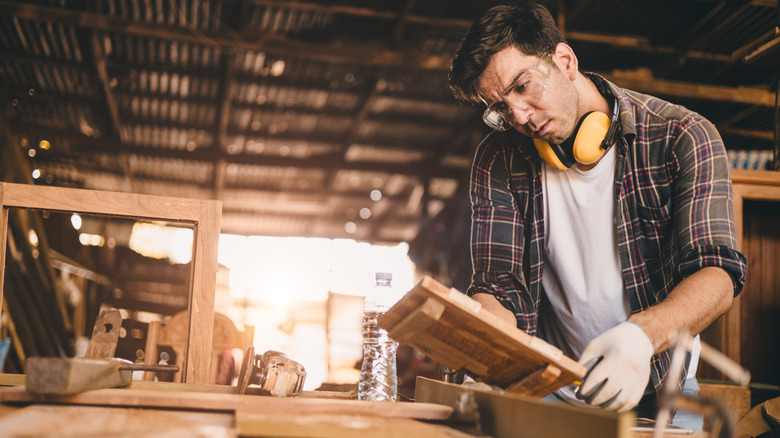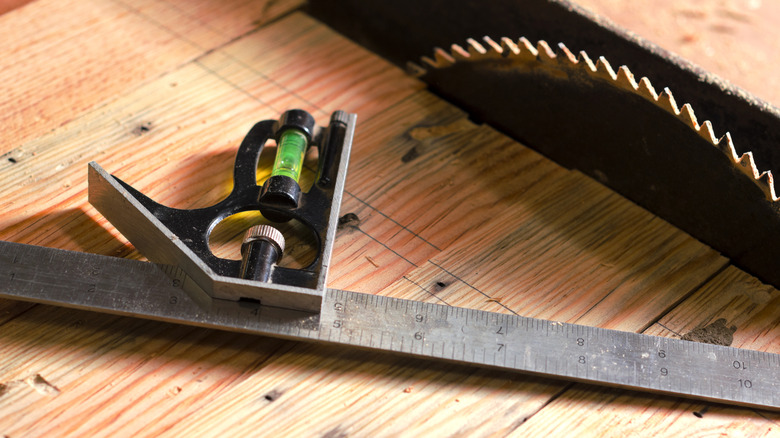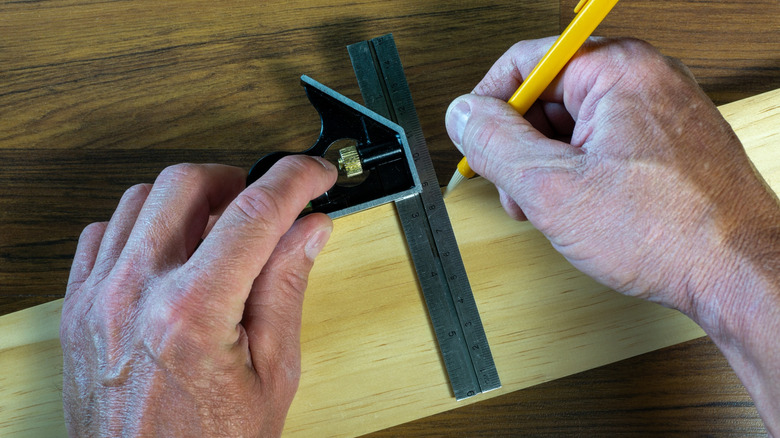The Affordable Woodworking Tool Every DIYer Will Want In Their Toolbox
We may receive a commission on purchases made from links.
A woodworking hobby can mean investing in a long list of tools, but not every product in the shop needs to be an expensive power saw or high-tech router. Enter, the combination square. This affordable, multi-use tool makes sure you follow the woodworking tip every beginner should know: measure twice and cut once.
A basic combination square has three main parts: a handle to measures angles, a metal ruler, and a thumb screw to lock the ruler in place. When taking a measurement, the ruler slides through the handle and the thumb screw keeps it from moving around so you take accurate measurements. In addition to these features, many combination squares also have a built-in bubble level, a protractor, a center head for finding the middle of round objects, and a scribing tool to make marks on projects. Typically, combination squares come in four sizes — 6 inch, 12 inch, 18 inch, and 24 inch — but many contractors prefer the two smaller ones because they are more portable and fit better in a pocket.
Why it's great for any DIYer to have
Many woodworkers consider the combination square a must-have tool, since it can be used for a variety of projects, from DIYing your own wooden outdoor chair to creating stylish storage in your home. The handle of a combination square can quickly and accurately confirm 45- and 90-degree angles, which is helpful for squaring lumber, marking lines, and mitering wood angles. The handle can also be used to quickly ensure your power tool blades are straight. Simply set the handle against the blade, and if there isn't gap between the two, you know the blade is square. The combination square is also a better depth gauge than a tape measure, since the ruler can be locked in place to ensure accurate measurements. This is especially important when setting the heights of saw blades, as the correct blade height produces better quality cuts and reduces the chance for saw kickback, which can be dangerous.
The list of uses goes on and on. If your combination square has a protractor, you can set the ruler to measure almost any angle and be confident in the accuracy. If it has a level, you can even use your combination square to ensure your materials are flat and even. Once you're done measuring and adjusting, the tool's scribe creates a fine line on a piece of wood that doesn't smudge like a pencil. The combination square is truly a workhorse in your wood shop.
Things you should know before buying
As with most tools, you tend to get what you pay for with combination squares. While you can pick one up for as little as $20, these less expensive models don't always hold up well over time. For instance, if you keep an inexpensive combination square tucked in your belt, the cheap metal ruler can bend. If you drop it a few times, the handle might skew just a little out of square. Either issue is enough to mess up the accuracy of your measurements.
Combination squares from well-known, time-trusted brands, like the Starett Steel Combination Square, can cost more than $100. Quality combination squares can be found for much less with a bit of shopping around, but you want to be sure you choose one with a cast iron head. These tend to stay square better than ones with flimsier aluminum heads. Etched numerals are also a good features, since they won't wear off with extended use. Finally, think about what kind of projects you are most likely to build and what measurements you might need to take. If you will often use 1/16-inch increments, for example, the combination square's ruler should include this more precise measurement.


